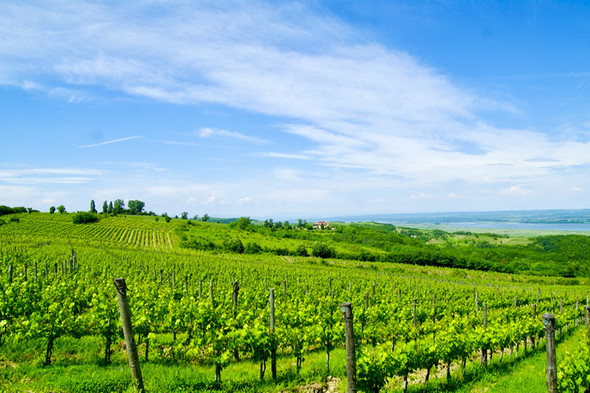Nowadays it’s no surprise if talking about Romania, wine also comes to one’s mind. Though it is sad that the country is represented mainly by supermarket wines on the lower shelves in England. London, once the centre of world wine trade, still plays an important role in forming the taste for wine although the past decade shows that this communication based stimulator role is being gradually taken away by the United States and New York in particular. But let’s get back to our baseline and to Romanian wines. On a cool February evening I happened to be on a #winelover event in Timișoara, Romania. The diner was followed by a wine tasting presenting national wines, where George Ignat (alias George Wine) not only made a sensational presentation but he also pulled something from his magic hat that I have never even heard of before.
Negru de Drăgășani
Is it only me or the past twenty years were really about the Fetească Neagră mantra when Romania and red wine were mentioned in one sentence? Not that it is a problem, I have tasted excellent Fetească Neagră wines from the Dealu Mare region. But! Having a single sip of a Negru de Drăgășani (NdD) in Timișoara was enough for me to immediately start planning my very first visit to the Drăgășani wine region.
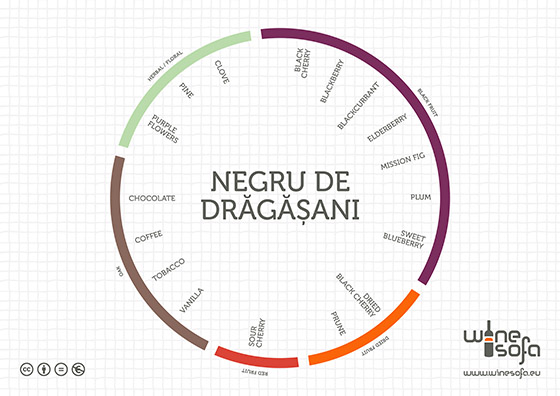
It so happened later that I encountered a couple of more NdDs at the Wine Up event where I also met Mr. Valeriu Stoica, the owner of Avincis Winery and his chief winemaker of French origin, Mr. Ghislain Moritz. So, I was waiting more and more eagerly for my visit with my eagerness reaching its peak after having been invited to the jury of IWCB in Bucharest.
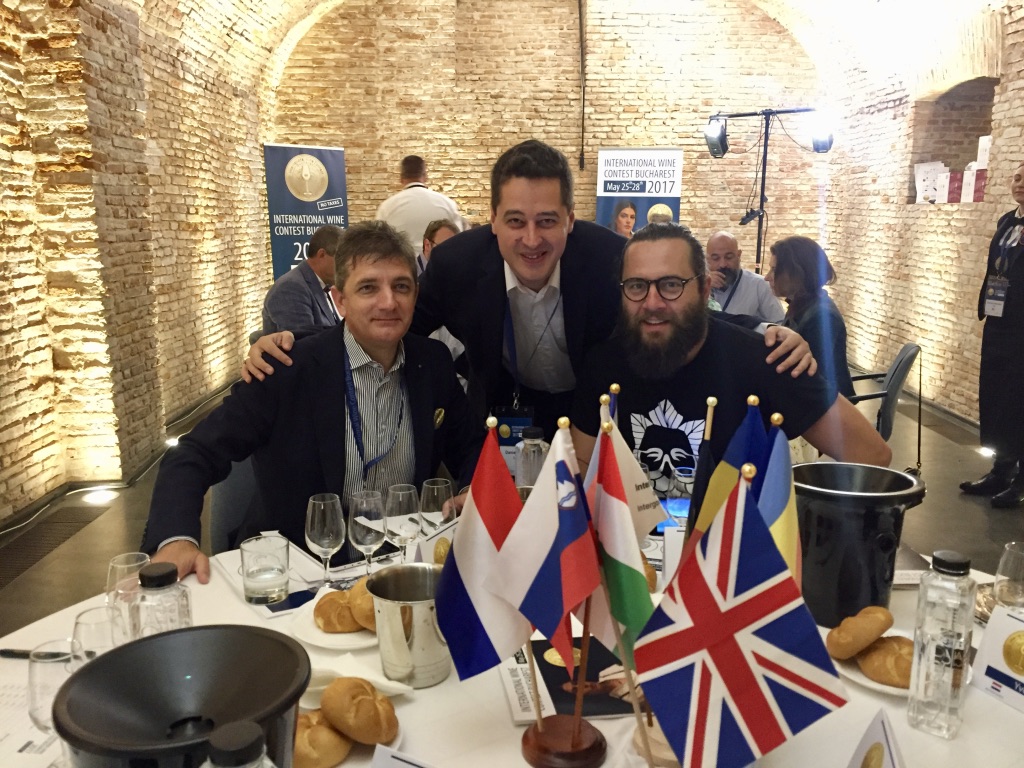
Together with Cosimin Tudoran (right) and Sergiu Nedelea (left) in Bucharest at the IWCB wine contest.
I quickly rented a car at the airport and headed east to Pitesti.
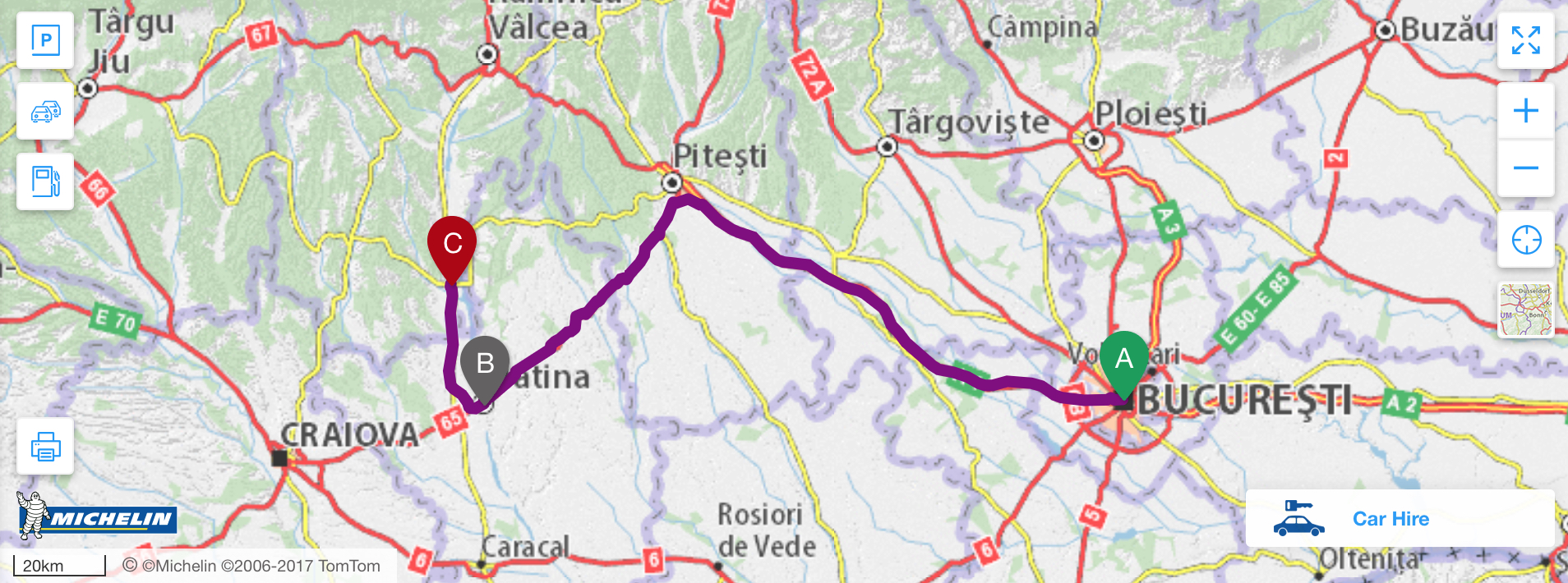
I left Bucharest on motorway A1 but instead of the instructions of my GPS I followed the wine makers’ recommendations and left the motorway for Slatina before Pitești. Although this route is longer but the quality of the asphalt road is much better in this direction. I crossed the river Olt at Slatina and turning to the north, I reached the town of Drăgășani.
Through endless villages
According to George (who introduced the said wine to me in Timișoara and who I met in Slatina) the reason why the villages seem to be so endless is that everyone wanted to live next to the main road so no parallel or perpendicular streets could be formed, instead villages are stretching 8-10 km long along the roads. The wine region was named after the town of Drăgășani situated right in the heart of the region. Vineyards are planted on the eastern and southern and just rarely on the western slopes of the hills stretching from the north to the south on the western side of the river Olt. The wine region stretches at a length of some 50 km along the river but its width hardly ever exceeds 6-7 km. Unfortunately, it is hard to determine the exact size of the wine region, i.e. D.O.C Drăgășani as neither accurate maps nor the exact location of the boundary or a comprehensive list of the settlements of the wine region are available. The one thing that seems to be sure based on its geographical location is that the southern boundary of the region is marked by the hills sloping gently into the local plains on the north of the village of Brăneț as evidenced by Google Earth. Certain (rough) maps of the wine region, however, mark the southern boundary of the wine region much further up in the north, more or less parallel with road No. 677, that is to say along the villages of Arceşti, Cocorăşti, Scorbura and Cârlogani. According to a third, rather simplified approach, the wine region is bordered by Ionesti on the north, while its southern boundary is Strejești next to the river Olt.
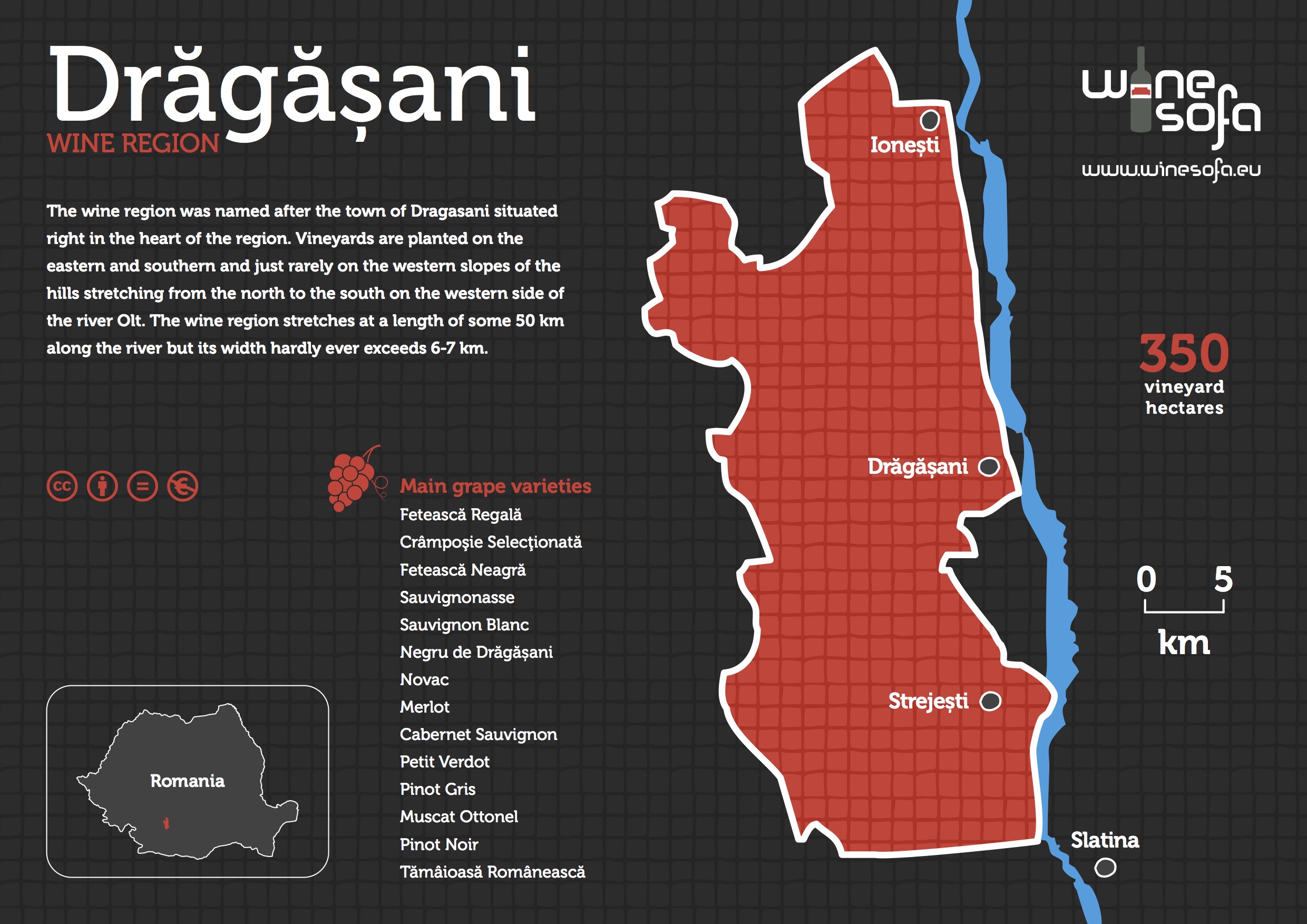
More important than this is, however, that credible information related to the exact size of the vineyards are just as unavailable as those related to the wine region, or at least I could not find any. So, I asked for some help from my Romanian friends who work in the wine business and the results exceeded my expectations. The numbers ranged from 350 hectares to 8,000 hectares. Finally, after some hesitation, I accepted the first figure for the following reasons: only a few wineries produce bottled wines from the wine region, so for the time being only those vineyards from which wine is readily available count as Drăgășani DOC. There are no reliable data about other grapes.
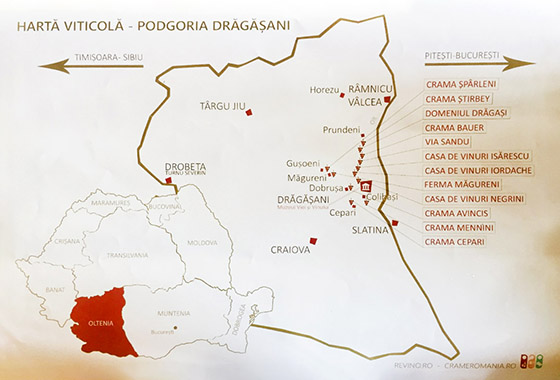
Thus, we can give only the above definition noting that the Drăgășani wine region is currently represented by a team of 4-6 wineries, including the two emblematic wineries of the country (Avincis and Stirbey) and the most innovative family wine estate (Bauer). Another thing that we can take for granted is that the hills are of sand, clay, sandstone and loess with a bit more of sand and reddish-brownish soil around Drăgășani and a continental climate represented by cold winters and warm, sometimes Mediterranean-like summers at the plantations located at a height of 190-450 m. And the whole of the above conditions offers the opportunity for making maybe the most exciting wines of Romania!
A bit of history
Already 500 years ago, the area of today’s wine region was covered with vine stocks, though the constant wars did not serve wine making well. Only after the Ottoman Sultan had loosened the apron strings became the local wines really well-known. During the period thereafter, only noble families, princes and counts or rich boyars of Wallachia and later the United Principalities of Moldavia and Wallachia (later Romania) held wine estates in the region. But then phylloxera reached the region and this upswing collapsed. Nevertheless, following a fast recultivation, soon both the white and the red wines produced in Drăgășani made their way to be among the world’s finest wines. Wine experts of the era compared these red wines to those of Bordeaux. Communism and nationalisation (meaning stealing) of the estates brought this new upswing to a standstill until the 1990s when a slow recovery and development began.
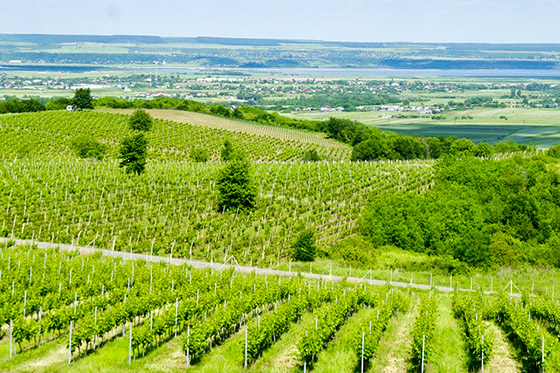
Today the key varieties of the wine region are Crâmpoșia Selecționată, Sauvignon Blanc, Pinot Gris, Fetească Albă, Fetească Regală, Sauvignonasse, Muscat Ottonel, Tămâioasă Românească, Cabernet Sauvignon, Petit Verdot, Pinot Noir, Novac, Fetească Neagră, Merlot and Negru de Drăgășani. Of these the most interesting ones are the local varieties that I am going to present in more details.
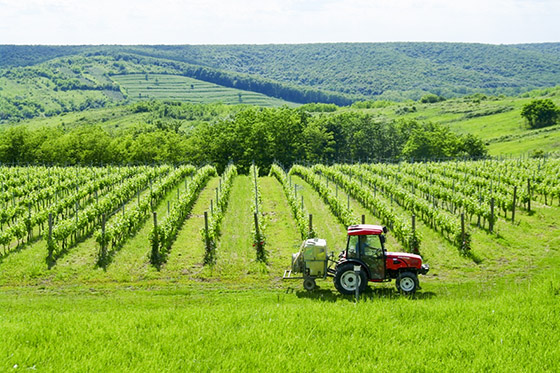
Let’s take a quick look at what ‘Wine Grapes’, the book endorsed with Jancis Robinson’s name, says about the following varieties:
Tămâioasă Românească aka Muscat Blanc à Petits Grains. The classic Muscat. Crâmpoșia Selecționată - High-quality, high-acid Romanian variety producing zesty, mineral-laden whites. A seedling of Crâmpoșia obtained in 1972 at the viticultural research centre in Drăgășani. Novac - Recent Negru Virtos x Saperavi cross that is difficult to handle but can produce fresh, lively red wines. Obtained in 1987 in Drăgășani. Negru de Drăgășani - Recent Romanian cross with the potential to produce soft, fruity reds. Meaning ‘black from Drăgășani’, the recent results from the viticulture research centre in Drăgășani suggest that the parents are Negru Virtos and Băbească Neagră. Obtained in 1993.
Pieces of advice before going on a trip
If we are planning to visit all the wineries of the region we should calculate with at least two but rather three days. The wineries Stirbey and Bauer should be scheduled to the same day together with the Drăgași Winery since these are neighbour wineries on the ridge of the hill on the north-west of the town of Drăgășani.
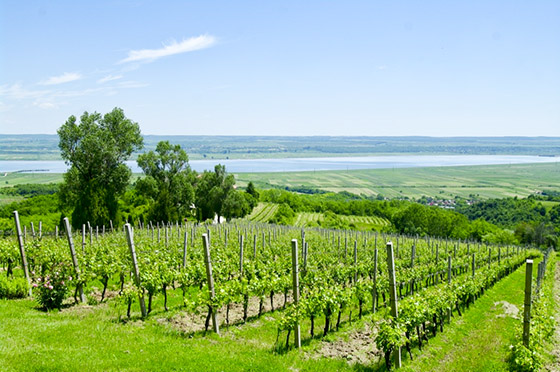
The Avincis Winery deserves a full day especially if we walk down (or drove) to the orthodox monastery hiding in the valley under the vineyards (in the village of Dobrușa) and on another day, we can visit the Mennini Winery together with the southern parts of the wine region. In the town that lent its name to the wine region, there are not too many places of interest (except for a wine museum) but on the southern slopes of the higher hills to the north of the wine region, a masterpiece of the Romanian architecture, the mansion in Măldărești is well worth a visit.
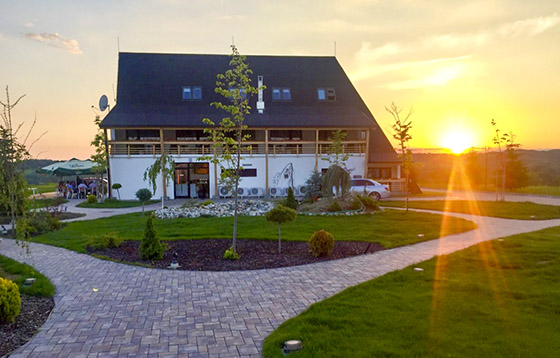
Forest Retreat and Spa
As far as accommodation is concerned, Avincis winery has fantastic guestrooms and meals are also available on request (just like in Domeniul Drăgași) but if, for some reason, you would not like to sleep in a winery, I recommend Forest Retreat&Spa that is just a 40-minute drive from the winery. It is not only a nice place to sleep in but it also has a wellness centre and a restaurant. And for those who would like to take a book to read, I would recommend to buy a masterpiece from Filip Florian, The Days of the King. Today Bucharest is easily accessible by plane (many low-cost airlines have it among their destinations), so no more excuses, go and discover the Drăgășani wine region yourselves!



